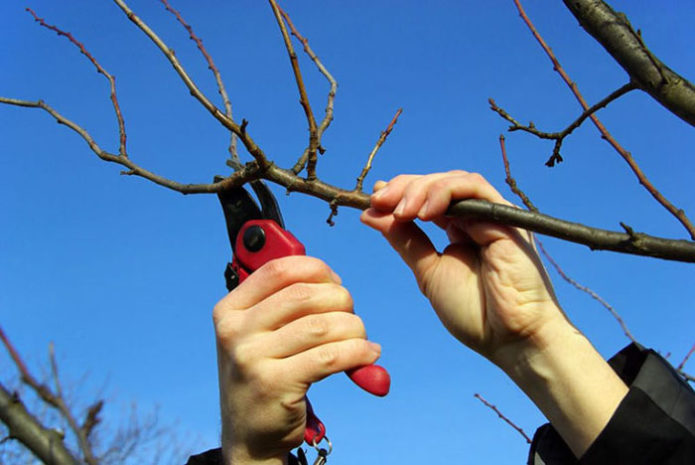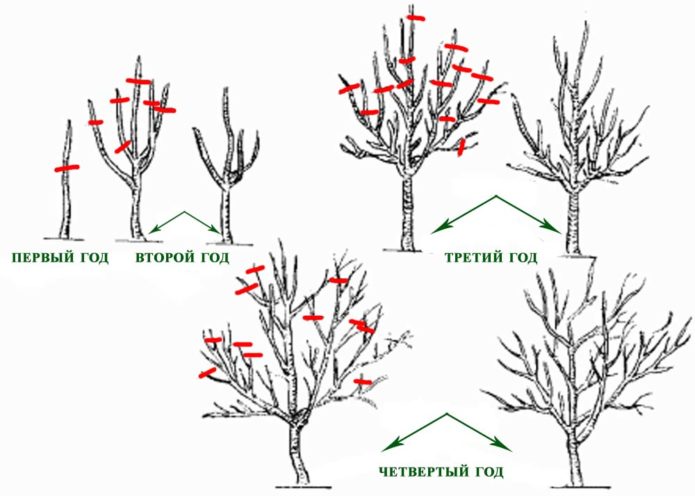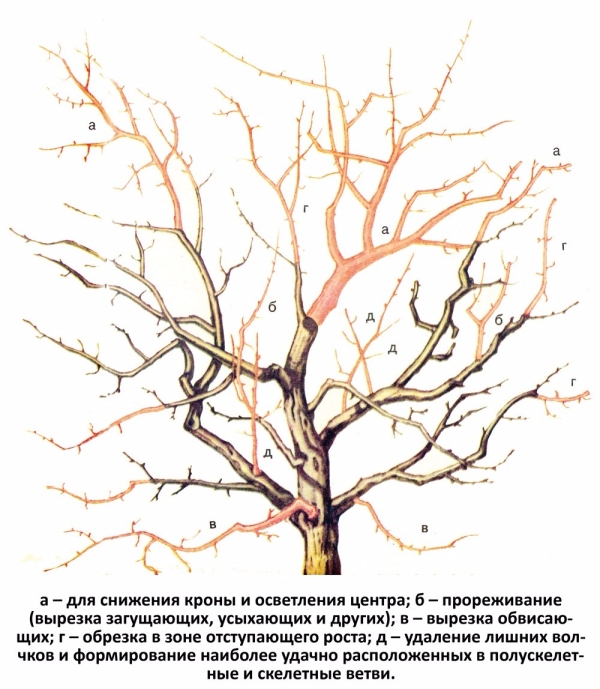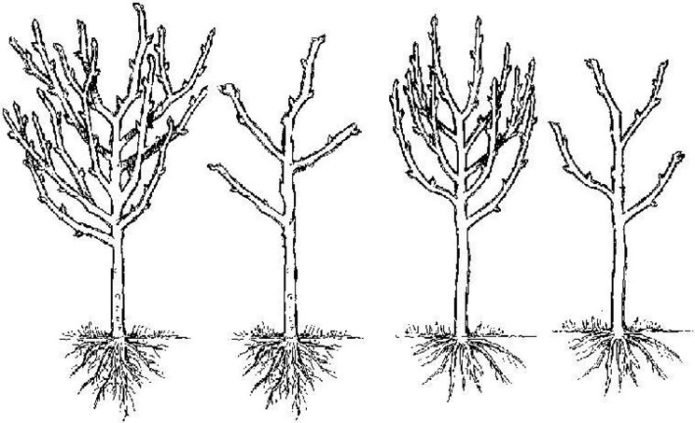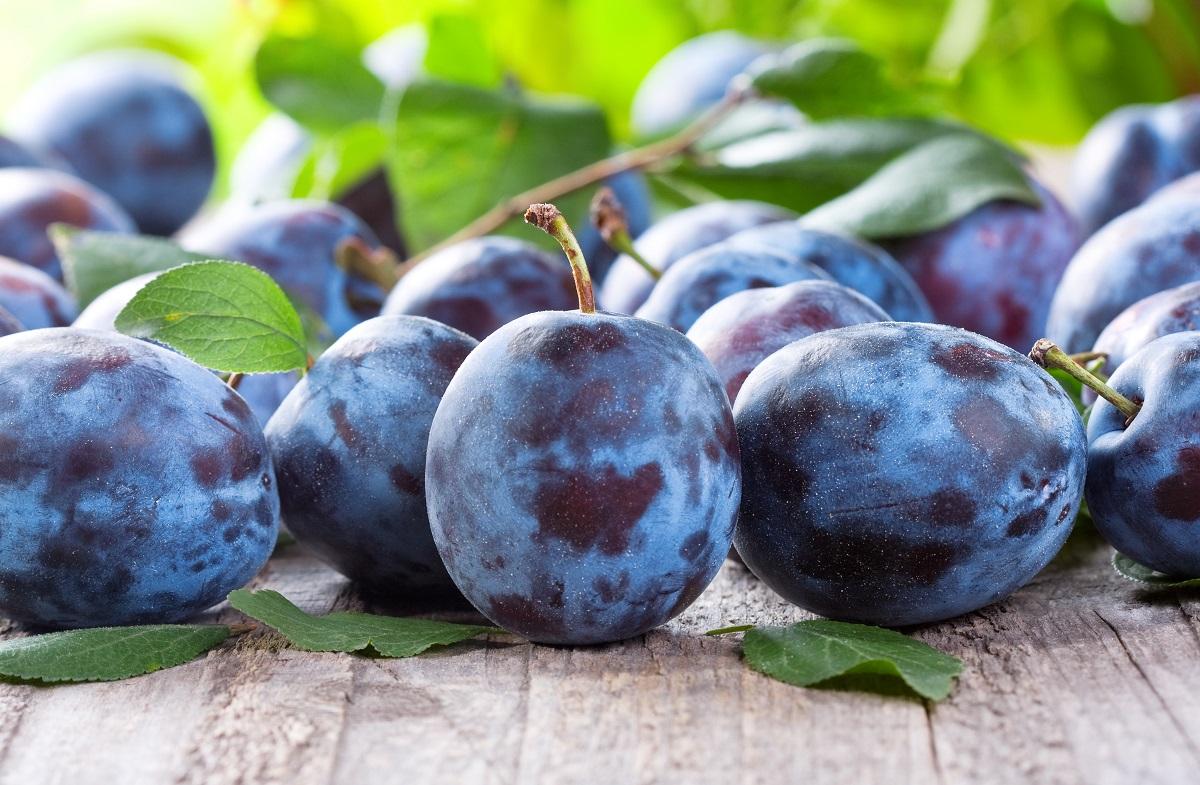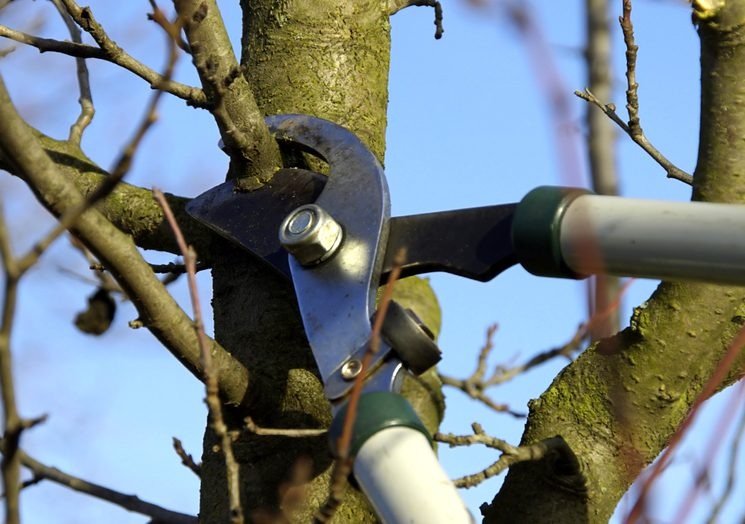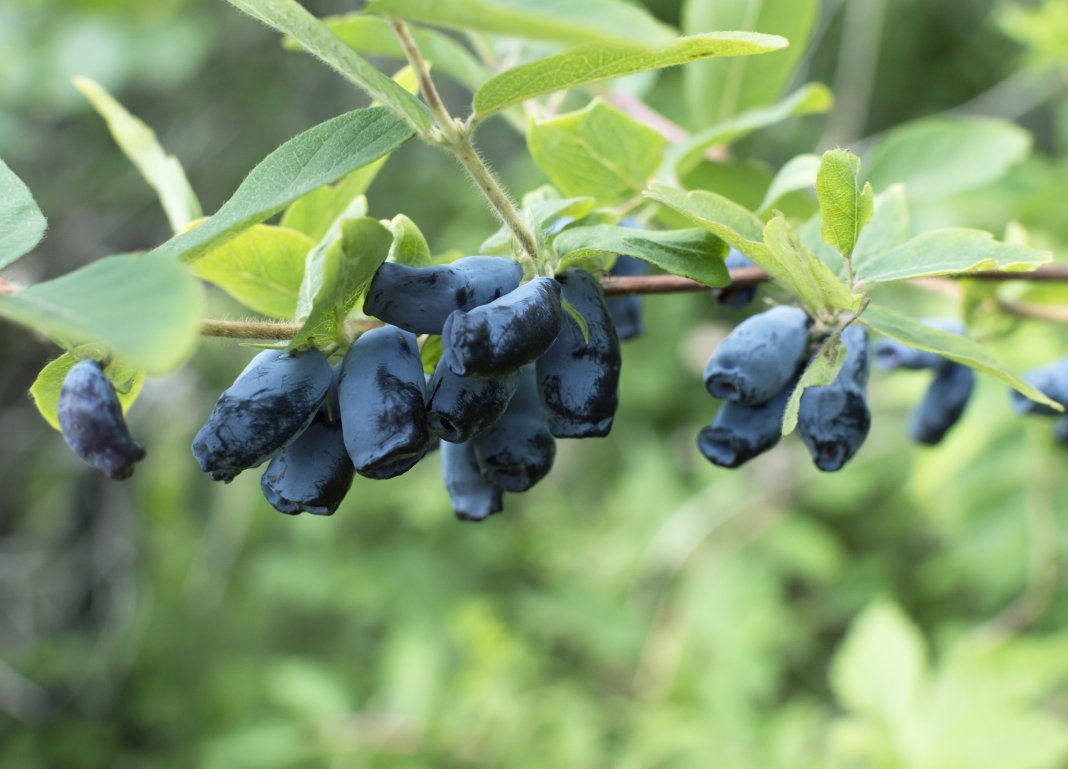Plum is a delicate tree and sensitive to any influences. However, you cannot do without pruning, otherwise many new branches will appear, the crown will thicken and the yield will decrease. Therefore, pruning plums in the fall and spring is a must for gardeners looking for a healthy, fruitful tree.
Content
Do I need to cut the plum
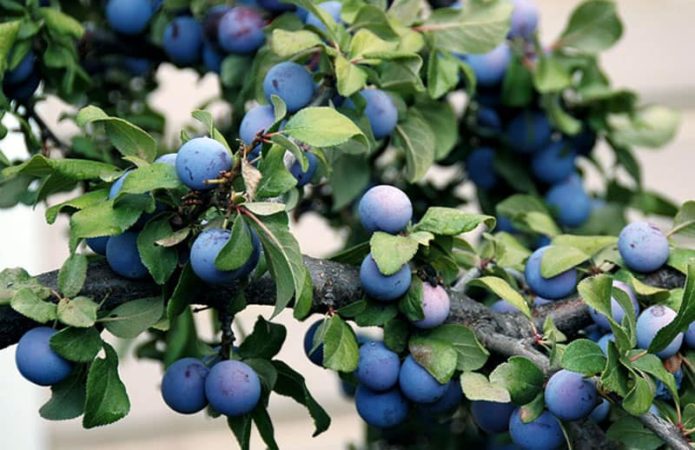
Plum is a tree up to 15 m high with an ovoid crown, the productive age of which is 10-15 years, but it can live up to a quarter of a century
A novice gardener may decide that there is no need to prune a plum - it is a compact tree that does not tend to grow in breadth. But at the same time, its crown grows very quickly and the branches intertwine.
In the early years, this feature may seem like a plus. The plum creates the volume necessary for fruiting faster than other fruit trees, the first fruits will appear earlier, and the yield will grow rapidly.
But after 4–5 years, more and more empty space will appear inside the crown, and on the periphery the branches will thicken, become too long and thin, most of the fruits and leaves will “settle” there. The harvest will be uneven, the fruits are crushed, and their quality will seriously deteriorate. New fruitful branches will cease to appear. In addition, the plum will become unstable to cold, can wither and die.
The correct pruning procedure for plums will help the tree to be healthy, bear fruit for a long time, improve the quality of the crop and give it a well-groomed appearance.
When is the best time to prune - in spring or autumn
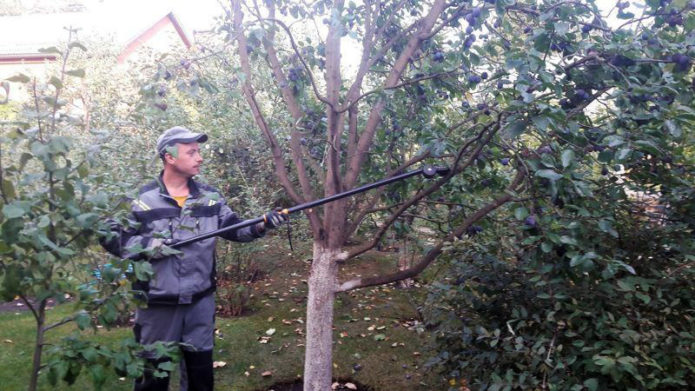
Autumn pruning of plums is more relevant for areas with warm, mild winters, in cooler regions it is better to transfer pruning to spring
Traditionally, plum trees are pruned in autumn from September to October or in spring in March-April, sometimes pruning is also practiced in the middle of summer so that the tree can withstand the harvest without broken branches. The timing of the procedure depends on:
- from the type of trim;
- climate of the region;
- the age of the tree.
The first pruning of a plum is done in the spring, it prepares the tree for fruiting season and includes:
- removing affected and competing branches;
- the formation of the skeleton and crown.
Spring pruning will be successful if the growing season has not yet begun and the tree is no longer threatened by frost.
Pruning plums in the fall to prepare for winter is the second most important procedure after spring pruning. It can be started only when the tree has completely dropped its foliage - this is a sign of the end of the growing season. However, it is not worth tightening with pruning, early frosts can hit unexpectedly. Branches are subject to deletion:
- dry;
- broken;
- growing too actively;
- affected by disease or pests;
- annual competitors that thicken the crown.
If the treetop reaches the 2.5 meter mark, it can also be removed in the fall.
In autumn, the annual shoots of a young tree are shortened by 1/3.
2–3-year-old branches of old trees are best left in the spring. The cut branches are burned so that overwintered parasitic insects do not breed in the garden in spring.
List of tools and materials
For pruning plums, you need high-quality and well-sharpened tools:
- Secateurs for branches up to 25 mm thick. The bypass model is good for live branches, the anvil model is good for dried ones.
- Lopper for branches up to 50 mm thick in hard-to-reach places. Long handles will allow you to penetrate into the thickened crown.
- Small and large garden saw (hacksaw) for branches thicker than 50 mm (dead and dry)
- Garden knife for burrs and irregularities.
Cuts and cuts must be processed with garden pitch - prepare it in advance.
When autumn pruning is necessary
Plum tree pruning is carried out depending on the climatic conditions of the region.
Table: terms of autumn pruning of plums by regions of Russia
| Region | Trim type | Timing |
| Black Sea region, south of the Volga region, Crimea, Kuban | Forming, regulating, sanitary and anti-aging | Second half of September - early October |
| Middle lane (including the Moscow region) | Sanitary, regulatory | Mid september |
| Northern part (Ural, Siberia) | Sanitary, regulatory | First half - mid September |
To recover, the tree needs 1–2 months before the cold weather, so carefully follow the forecasts of weather forecasters and adjust the pruning schedule.
Step-by-step pruning instructions for beginners
Pruning plum trees of different ages and types requires a special approach.
Crown formation scheme for young plums
The first time a plum is cut off when a 1-2-year-old seedling is transplanted into the soil. This is done so that the root system, after stress, is able to provide nutrients to the skeletal branches.
How is the first pruning of young plums:
- Clear the trunk from side branches 50 cm from the ground and cut 1.5 m from the ground.
- Cut the remaining branches in half.
Next year, trim the stem above the largest bud. 2–3 times a year, remove the growth of side branches, as well as broken, diseased and overlapping branches. From 3 years old, cut the trunk once a year so that its length does not exceed 2.5 m, and the growth is straight and correct.
Anti-aging for old trees
At the first signs of decaying growth and a decrease in yield in the upper part of the crown, the plum needs rejuvenation. Rejuvenating autumn pruning is carried out as follows:
- Cut off diseased, dead, damaged and competing branches. After a year, thin out the crown, leaving young growths.
- Cut off branches that have grown on the tree in the past 3-4 years. Repeat the procedure after 4–5 years.
- Prune the tops pointing towards the center of the crown annually.
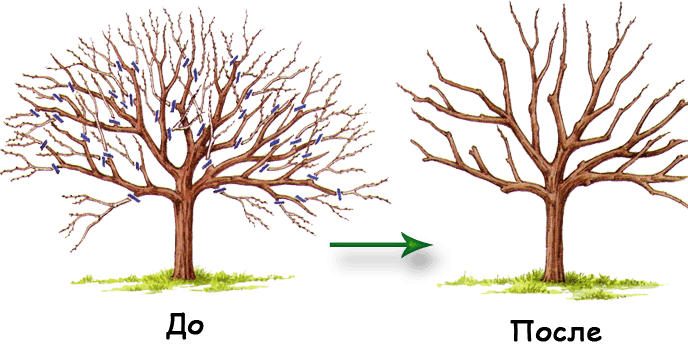
Pruning a plum is similar in its highlights to pruning an apple tree, except that the crown of the plum tends to outgrow
Do not cut all branches at once, this is a serious stress on the tree. Divide the procedure into 2-3 years, take care of the enhanced feeding and watering.
Old plums are pruned up to 15 years old. Do not make rejuvenating pruning of an old plum, in which the conductor and skeletal branches are seriously damaged.
Columnar
Columnar plum is medium-sized, with an underdeveloped crown, reminiscent of a narrow pyramid. It is distinguished by its early maturity, high yield and good fruit quality.
How to prune a columnar plum in the fall:
- Trim the trunk (up to 2-3 buds) only if it does not grow well.
- Prune side branches longer than 20 cm.
- Remove all but the strongest shoots annually.
Columnar plum requires a minimum of manipulation, which is convenient for a novice gardener.
Video: Pruning Plum Correctly
What care to provide for a pruned tree
Pruning is stress for the tree, you need to help to transfer the consequences of the procedure with minimal losses:
- Clean out the cut with a knife and generously lubricate with garden varnish.
- Feed the plum with fertilizer, mulch the trunk circle.
The trunk circle at the plum must be at least 2 meters in diameter.
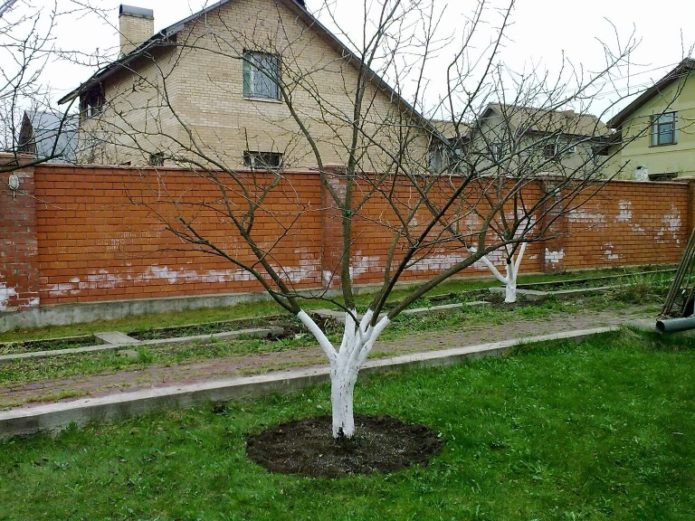
The pruning process should be carried out in good weather, when frosts, stormy winds, heavy showers are not expected
After pruning, you can feed the plum with a solution of minerals:
- 35 liters of water;
- superphosphates (3 tbsp. l for every 10 liters of water);
- sulfurous or potassium chloride (2 tablespoons for every 10 liters of water).
Water the tree with this mixture, mulch the circle with dry earth, straw or wood shavings, loosen by digging in the mulch.
Pruning plums in the fall is needed to increase yields and easy wintering. It is important to carry out work at least a month before the onset of constant frosts so that the tree has time to recover after the procedure. Without pruning in the fall, you cannot get a healthy, strong plum with stable fruiting.
